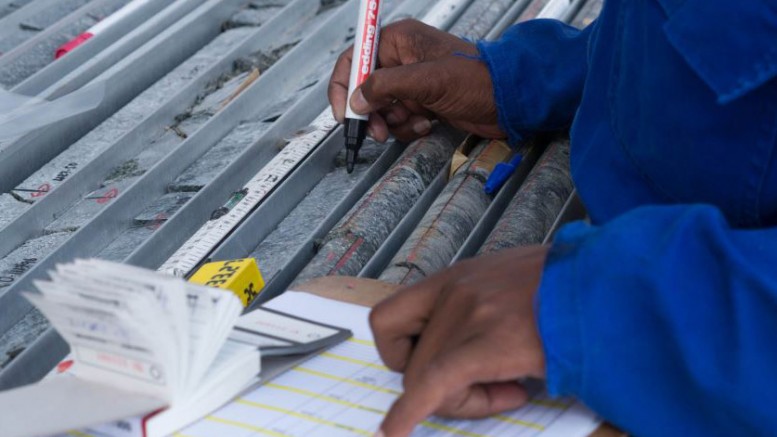VANCOUVER — Roughly three years ago junior Platinum Group Metals (TSX: PTM; NYSE-MKT: PLG) made its Waterberg discovery on the North Limb of South Africa’s prolific Bushveld complex, and the company has had the project on the fast track ever since.
On Friday Platinum Group announced a preliminary economic assessment (PEA) at Waterberg, which it is aiming to get into production by 2018. The company now holds a 49% stake under a joint venture with Japan Oil, Gas and Metals National Corp. (JOGMEC), and its empowerment partner Mnombo Wethu Consultants.
The announcement follows an eventful 12 months for Platinum Group, which continues to advance two additional platinum projects in the region, namely its 74%-owned Western Bushveld joint venture and its 87%-owned Waterberg Extension discovery. The company suffered a brief funding shortfall in mid-October, but was able to boost its coffers with a $175-million equity raise at the end of 2013.
Waterberg’s PEA builds on a resource update Platinum Group announced in early September, which includes the project’s T1, T2, and F layers. The company notes resource expansion potential on the T layers, while the deposit model has been truncated — for initial economic reasons — at 1,000 metres depth.
Waterberg’s operation would focus on 167 million inferred tonnes grading 0.98 gram platinum per tonne, 1.97 grams palladium per tonne, 0.13 gram gold per tonne, 0.07% copper and 0.17% nickel. Total contained 3E metals (platinum, palladium and gold) are pegged at 17.5 million oz. averaging 3.26 grams 3E per tonne.
Platinum Group’s mine plan contemplates three decline clusters to capitalize on the deposit’s shallow depth. The shallow edge of the T layer is at 130 metres vertical, while the shallow edge of the F layer sits at 220 metres depth. The planned mining method is all mechanized and includes room-and-pillar mining on mineralized layers 3 to 10 metres thick and long-hole open stoping on layers from 10 to 60 metres thick.
Waterberg would use a standard flotation circuit to produce 655,000 oz. 3E metals in concentrate over a 22-year mine life at production costs of US$438 per oz., including copper and nickel credits. The PEA assumes metallurgical recoveries of 83% 3E on the F layer and 88% 3E on the T layers. Copper recoveries are pegged at 86% and 74% on the T and F layers, while nickel recoveries are 83% and 59%.
Waterberg would cost US$885 million to develop over a two-year construction period, and carry a US$509 million after-tax net present value (NPV) at a 7.5% discount rate, along with a 14% internal rate of return and a six-year pay-back period. Platinum Group’s model assumes optimistic metal prices of US$1,586 per oz. platinum, US$701 per oz. palladium, US$1,539 per oz. gold, US$3.58 per lb. copper and US$8.35 per lb. nickel, and a 100% stake in the project.
“The peak funding estimate is modest compared to the opportunity for large-scale participation in the platinum and palladium markets,” noted president and CEO Mike Jones in the release. “The planned [production] is significant in the global market for platinum group elements. In addition, we see significant opportunity to expand resources and to optimize [the project] in the prefeasibility study.”
In terms of regional economic benefits, Waterberg is projected to create 2,200 jobs during full production, with the mechanized nature of the project requiring “trained and well-paid workers.” Consultation with the local rural population would continue during the feasibility stage. The company has made preliminary contact with utilities for power and water, though it notes “considerable work will be required to secure these bulk services.” Early cost estimates for these services and road improvements have been included in the PEA.
BMO Capital Markets analyst Edward Sterck — who maintains a “stock outperform” rating on Platinum Group, along with a $1.31-per-share price target — noted in a Feb. 18 research note that “the PEA has confirmed BMO Research’s outlook for the Waterberg joint venture, de-risking a number of assumptions. [Platinum Group] remains BMO Research’s top pick in the PGM space, and continues to trade at a substantial discount to peers.”
Platinum Group shares have traded within a 52-week window of 87¢ to $1.51, and gained 10% over the first month of 2014 en route to a $1.31-per-share close at press time. The company reported US$237 million in cash in January, and has 551 million shares outstanding for a $722-million market capitalization.


Be the first to comment on "Platinum Group unveils Waterberg PEA"